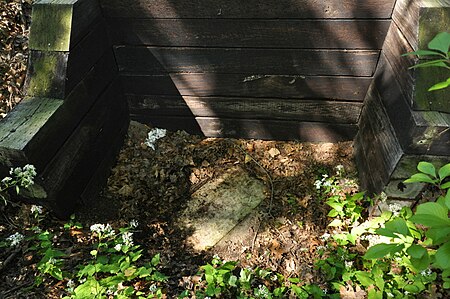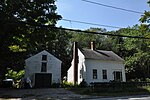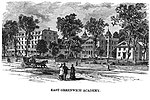Elizabeth Spring
Kent County, Rhode Island Registered Historic Place stubsNational Register of Historic Places in Rhode IslandWarwick, Rhode Island

Elizabeth Spring is an historic water source in Warwick, Rhode Island. The spring is mentioned in the writings of Rhode Island founder Roger Williams, specifically in reference to Elizabeth, the wife of John Winthrop, Jr., with whom he visited the spring. The spring is located on an embankment east of the railroad tracks and just north of Old Forge Road at the head of Greenwich Cove. Its location, which is not readily visible from the road, is marked by a circular millstone, on which a marble slab with a now-illegible inscription was mounted in 1858.The spring site was listed on the National Register of Historic Places in 1983.
Excerpt from the Wikipedia article Elizabeth Spring (License: CC BY-SA 3.0, Authors, Images).Elizabeth Spring
Old Forge Road, Warwick
Geographical coordinates (GPS) Address Nearby Places Show on map
Geographical coordinates (GPS)
| Latitude | Longitude |
|---|---|
| N 41.6475 ° | E -71.456944444444 ° |
Address
Old Forge Road 393
02818 Warwick
Rhode Island, United States
Open on Google Maps










